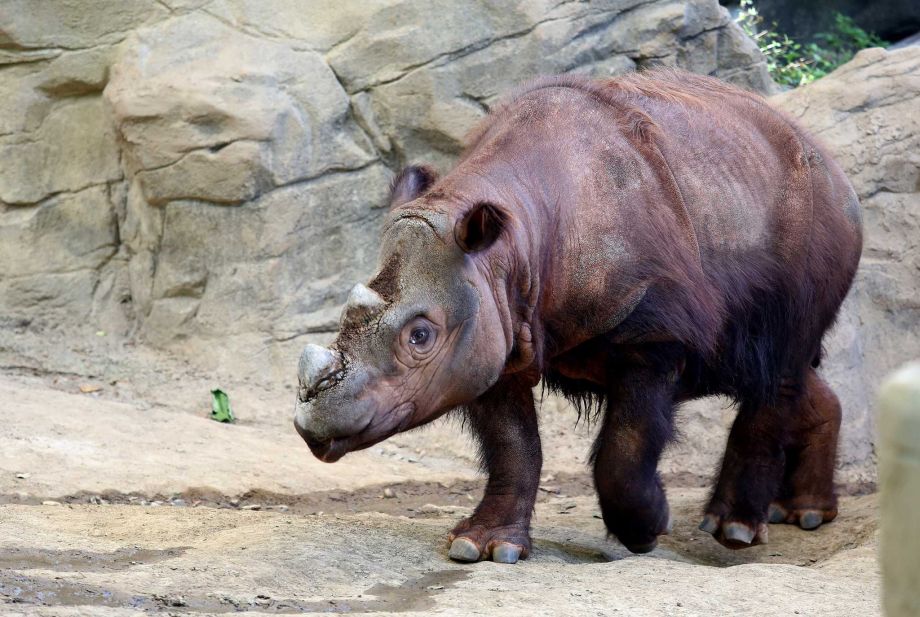
Conservation experts at the Cincinnati Zoo say 8 year-old Harapan could be on his way within several weeks to Indonesia, where nearly all of the estimated 100 remaining Sumatran rhinos live.
Numbers of the two-horned descendants of Ice Age wooly rhinos have fallen by some 90 percent since the mid-1980s as development of their Southeast Asia forest habitat and poachers seeking their prized horns took their toll.
Cincinnati’s zoo has been a pioneer in breeding the species, also called “hairy rhinos,” producing the first three born in captivity in modern times. Harapan will join the eldest, Andalas, who has been in Indonesia since 2007 and has produced one male offspring. Andalas will turn 14 next month.
Roth said final details and permits are still being worked out so the transfer timetable is uncertain. It’s expected Harapan will be flown to Jakarta, then taken by ferry to his ancestral island home of Sumatra.
Bambang Dahono Adji, director of biodiversity conservation at Indonesia’s Ministry of Environment and Forestry, said preparations are underway at a rhino sanctuary at Way Kambas National Park in southern Sumatra, and hopefully Harapan will arrive by early October at the latest.
Indonesia has said it does not want to be dependent on other countries in conservation efforts by sending rhinos to be bred abroad. However, it says it welcomes any technological or scientific assistance for the Sumatran rhino breeding program.
Veteran zoo rhino keeper Paul Reinhart will accompany Harapan. He and others will work with the rhino, who already has traveled across the U.S., to condition him to being in a crate for the long flight.
Harapan and Andalas’ sister, Suci, died from illness last year at the zoo, after the Cincinnati conservationists had discussed trying to mate the siblings in a desperation move.
Dahono from Indonesia’s environment and forestry ministry said Suci may have died because her diet at the zoo contained too much iron, and expressed concern that Harapan could face the same fate.
“The conclusion of experts is that Harapan has to be saved,” Dahono said. “Therefore, we are insisting on getting Harapan back to its original habitat here rather than having it live alone there.”
“We don’t want to see any more premature deaths of rhinos,” he added. “We don’t want Harapan to become a second Suci.”
Harapan was brought back to Cincinnati two years ago after being on loan to the Los Angeles Zoo. He also spent time in Florida’s White Oak conservation center.
He will join Andalas at the Sumatran Rhino Sanctuary, where he lives with three females and his one male offspring, born in 2012, on the Indonesia island. With three Sumatran rhinos in a sanctuary in Malaysia and Harapan, there are only nine in captivity globally. Some scientists recently concluded that there are no more Sumatran rhinos living in the wild in Malaysia.
Conservationists and government officials met in Singapore in 2013 for a Sumatran Rhino Crisis Summit to discuss increasing action to protect the species.
Environment ministry officials in South Africa, home to most of the world’s remaining rhinos overall, reported a total of 393 rhino poachings through April, an increase of more than 20 percent over the same period in 2014. Rhino advocates said recently they believe the losses are even higher.
South Africa has struggled to counter poaching syndicates cashing in on high demand for rhino horns in parts of Asia where some people claim they have medicinal properties for treating everything from hangovers to cancer.